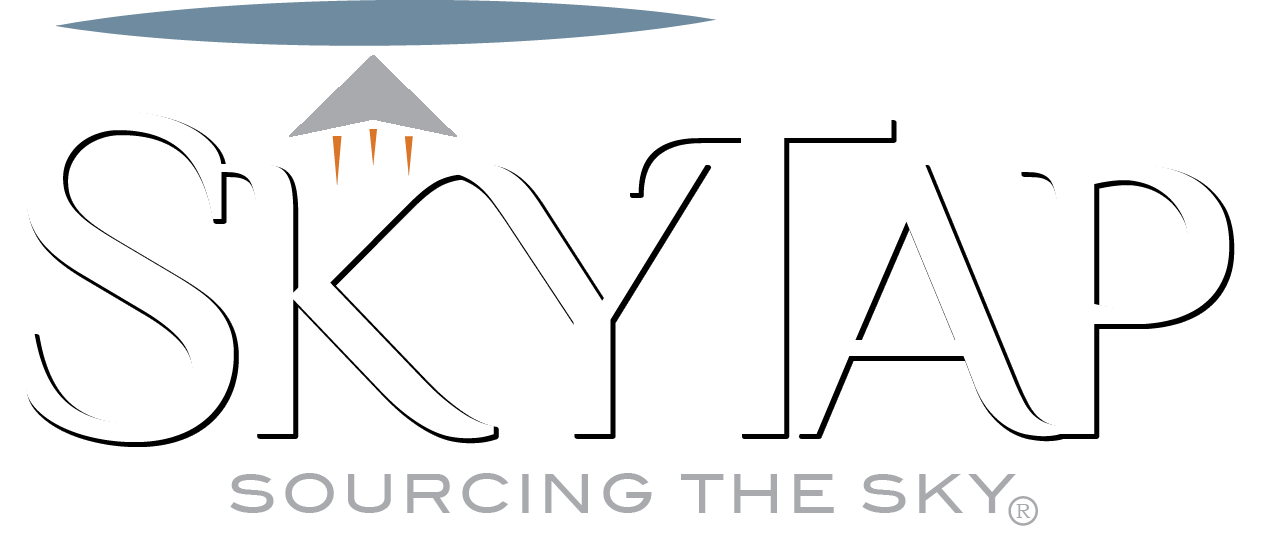A crew from Hatch shows off some of the drone equipment used for water sampling in pit lakes.
After a job underground two years ago, Pierre Filiatreault and his colleagues at Hatch in Sudbury began to see the true potential of drones, or unmanned aerial vehicles (UAVs).
"There was a local client that had an ore pass that was clogged underground," said Filiatreault, who specializes in control automation and electrical systems. "It's very dangerous and there has been a few incidents locally where it has caused deaths, so the idea was to grab a drone and fly it up an ore pass so we could determine the height and capture some images of what the blockage looks like, so we could feed that to operations and they could make better decisions, all while doing it relatively safely and not putting anyone at harm."
"That got the ball rolling, and then once we started talking about it, we started looking at many applications. There are so many out there, from pipeline inspections to mapping and surveying. One that we're doing that's really interesting is water sampling."
That involves using a high-payload drone that is able to collect water samples at depth – Filiatreault and his co-workers collected a one-litre sample from 65 metres below the surface during a trial run in Northern Ontario.
"The business case we had involves pit lakes," Filiatreault said. "The pit is under care and maintenance and they use the decline to launch their boat, but the decline is, in some cases, not in the best state. We remove all of that from the picture. There's no boats, there's no working on the water. There are all these safety precautions, like you're supposed to have two crews, one backup, all this stuff, but with the drones, from the side of the pit, we can take off, collect the sample with the drone and retrieve it."
Hatch is always looking at ways to improve its services using new technology, he said, and UAVs offer a wealth of possibilities.
"It's going to become the norm," Filiatreault said. "Take visual inspections, for example. That's one that's going to be so common. Why would you work at height, construction scaffolding, if you could just take off with a drone and go capture imagery and, either via sensors or pictures, collect information, knowledge that you could then make a decision to see if you actually need to conduct a repair or to better prepare yourself for that repair? You might be able to identify the material or the parts that you would need, even before you start your job and all you would need to do is hover near with a drone, capture a picture and it's worth a million words."
UAV technology was recently used to map the iconic Big Nickel. Science North enlisted Hatch to build an accurate 3D model of the giant coin and surrounding area at Dynamic Earth.
"The way it works is you need a series of pictures, but with a certain amount of overlap between all pictures, roughly 85 per cent or more," Filiatreault said. "What it does is it essentially stitches all the pictures together, but at the same time, it uses the GPS co-ordinates that are recorded under each photo, so now it has the orientation, the positioning of the picture, but it also knows where the camera was pointing, so it then triangulates and, with that perspective, it reconstructs the object or the terrain."
Mapping the surface manually would have required working at heights, a process that would be much more time-consuming.
"We were on site for a total of two hours," Filiatreault said. "We flew the drone for an hour, about six or seven flights, about 10 minutes each. Within an hour, you collect all of the photos you need, 600 or so photos."
The post-processing took a little longer, from six to eight hours to process the entire three-dimensional model.
"You have to do all the leg work, get all the regulations and the proper approvals to fly, but once you're using the drone, it's very efficient and very flexible. If you need to look at something else or you missed a picture, you can take it then and there, and that's the big advantage over using traditional methods."
The drone used on the Big Nickel project was a DJI Inspire I, an advanced, but consumer-rated device which retailed for about $5,000 when new. Hatch has other, more specialized models for more demanding tasks.
Filiatreault is excited about the many services UAVs will be able to perform as the technology evolves.
"There's a lot that drones can do, for sure."
Find Hatch online at www.hatch.com.
Source: Sudbury Star


